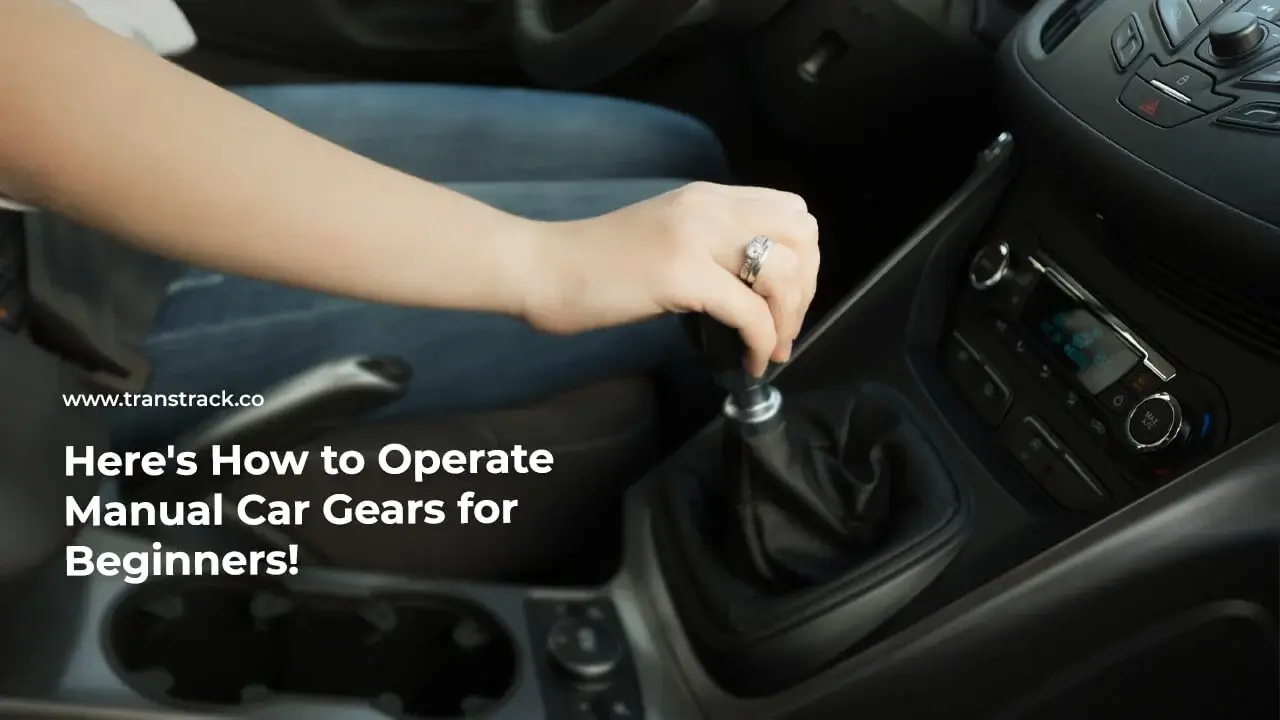Here’s How to Operate Manual Car Gears for Beginners!

For those of you who are learning to drive a car for the first time, understanding how to operate a manual gear car is important. Passing gears in a manual car is not as easy as passing gears in a matic car. To be able to pass the gears of a manual car smoothly requires repeated practice. So, how to operate a manual car gear for beginners?
Don’t worry, because TransTRACK will discuss how to properly operate a manual car gear, especially for beginners. Understanding basic techniques such as how to downshift and shift gears smoothly is key to optimizing your driving experience. Let’s explore together!
Tips on How to Operate a Manual Car Gear for Beginners
Operating a manual transmission car may seem challenging at first, but with the right understanding and enough practice, you will be able to master it with confidence. Here is a guide on how to properly shift gears in a manual car, especially for beginners.
Understanding the Basics of Manual Transmission
Before we go any further, it is important to understand the basics of manual transmission. Manual cars use a clutch that allows the driver to shift gears manually. When the gear lever is moved, the clutch is stepped on to break the connection between the engine and transmission.
Getting to know the gear lever
Take a look at the gear lever on your car. Usually, this lever is located between the driver and passenger seats at the front of the car. Manual car transmissions have several positions that need to be understood. The recognized gear lever positions are usually neutral, 1st gear to 5th or 6th gear, depending on the type of car. The reverse gear position also needs to be identified, so that you don’t enter the wrong gear.
Starting and Stopping the Car
Before starting a trip, make sure the car is in neutral. Insert the key, press the clutch, and start the engine. Afterwards, release the clutch slowly while maintaining the neutral gear position. To stop the car, make sure it is in neutral and depress the clutch while the engine is still running. This ensures the car remains stationary without shutting down the engine.
Downshifting
How to downshift a manual car is a crucial step in driving. For example, when slowing down or stopping, slowly downshift one gear at a time. This helps to maintain vehicle stability and prevent engine shutdown. Also pay attention to the speed of the vehicle and adjust gears to the appropriate speed. For example, use a lower gear when starting from a standstill or going uphill.
Continuous Practice
To improve skills, practice manual car gear operation in a large parking area or quiet street first before entering heavier traffic. Practice at various speeds to familiarize yourself with gear shifts appropriate to road conditions.
Tips for Smooth Car Gear Operations
Operating car gears with smoothness is a skill that can improve your ride comfort, reduce stress on the transmission, and extend engine life. Here are some tips for achieving smooth car gear operation:
Light Touch
When you change gears, be sure to touch the gear lever gently. Avoid applying excessive pressure on the gear lever. A light touch helps prevent unnecessary friction and wear on the transmission.
Watch the Clutch Shift
Observe the peak point of the clutch when you change gears. Get a good understanding of the clutch breaking point, which is when the clutch is fully disengaged. Precise gear changes often occur at this point. Learn the feeling and response of the clutch to ensure smooth shifting.
Understand Gear Requirements
Always pay attention to vehicle speed and road conditions. Select the appropriate gear according to the speed and road conditions. When accelerating, increase the gear gradually. When decelerating or stopping, downshift to keep the engine within a safe speed range.
Clutch Utilization
Use the clutch wisely. The clutch is a critical element in a manual transmission. Be sure to disengage the clutch gently and unhurriedly. Avoid stepping on the clutch for too long, as this can cause excessive wear on the clutch system.
Signs of Improper Manual Car Shifting
When shifting gears in a manual car, there are several signs that indicate that the shifting has not been done correctly. Here are the details:
The Car Suddenly Stops
When you shift gears in a manual car incorrectly, one of the obvious signs that often appears is a car that suddenly dies. This happens when the gearshift is not synchronized with the clutch release. In addition, over-shifting at low speeds can also cause the car engine to die suddenly.
Failure to Engage Gear
Another sign that the gearshift is not correct is difficulty or failure to engage the gear. When you find it difficult to shift or even unable to shift at all, this could be an indication that you are trying to shift into a gear that is not appropriate for the current speed.
Car Stalls
A car that stalls when shifting gears is another concrete sign that the shifting is not correct. When you try to shift gears, the car should move smoothly and without a hitch. However, if you feel that the car stutters or there are unusual vibrations when shifting gears, this indicates that the shifting is not appropriate.
To ensure optimal performance of your manual transmission car, it is important to maintain it properly. One of the best ways is to use the Vehicle Maintenance System from TransTRACK. This technology can help you monitor and maintain your car effectively and efficiently.
Vehicle Maintenance System is an advanced solution that can help track maintenance schedules, optimize engine performance, and ensure your vehicle stays in the best condition. With the help of this technology, you can more easily keep your manual transmission car in top condition.
Don’t hesitate to keep learning and improving your driving skills. Happy driving and be a safe and responsible driver!
Topic





